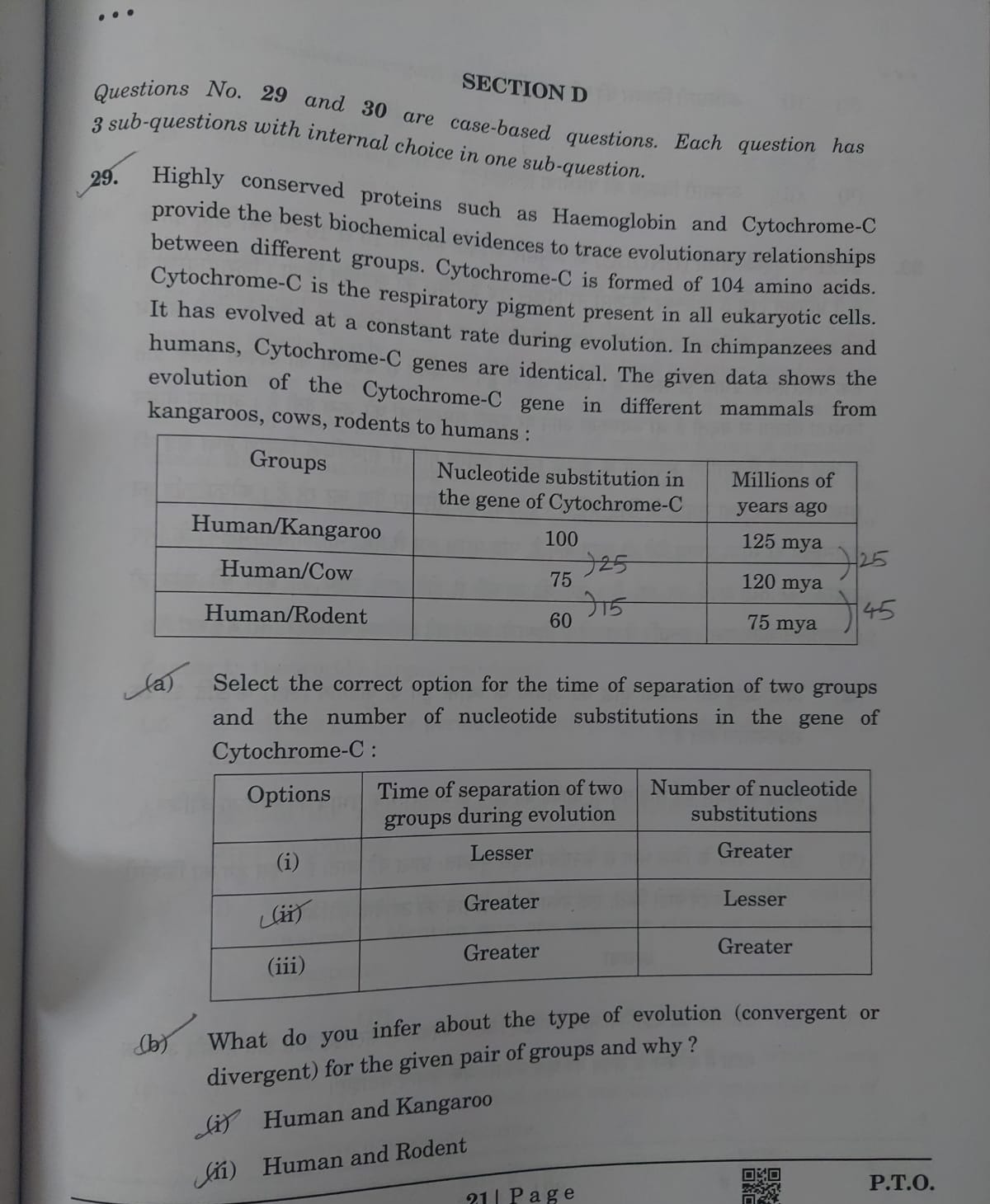Question
Question: Highly conserved proteins such as Haemoglobin and Cytochrome-C provide the best biochemical evidence...
Highly conserved proteins such as Haemoglobin and Cytochrome-C provide the best biochemical evidences to trace evolutionary relationships between different groups. Cytochrome-C is formed of 104 amino acids. Cytochrome-C is the respiratory pigment present in all eukaryotic cells. It has evolved at a constant rate during evolution. In chimpanzees and humans, Cytochrome-C genes are identical. The given data shows the evolution of the Cytochrome-C gene in different mammals from kangaroos, cows, rodents to humans:
| Groups | Nucleotide substitution in the gene of Cytochrome-C | Millions of years ago |
|---|---|---|
| Human/Kangaroo | 100 | 125 mya |
| Human/Cow | 75 | 120 mya |
| Human/Rodent | 60 | 75 mya |
(a) Select the correct option for the time of separation of two groups and the number of nucleotide substitutions in the gene of Cytochrome-C:
| Options | Time of separation of two groups during evolution | Number of nucleotide substitutions |
|---|---|---|
| (i) | Lesser | Greater |
| (ii) | Greater | Lesser |
| (iii) | Greater | Greater |
(b) What do you infer about the type of evolution (convergent or divergent) for the given pair of groups and why?
(i) Human and Kangaroo
(ii) Human and Rodent

Lesser time of separation, Greater number of nucleotide substitutions
Greater time of separation, Lesser number of nucleotide substitutions
Greater time of separation, Greater number of nucleotide substitutions
(a) Option (iii) – Greater time of separation gives greater nucleotide substitutions.
(b) Both pairs show divergent evolution (human–kangaroo diverged long ago; human–rodent diverged more recently).
Solution
(a) Option Selection:
The cytochrome‑C gene evolves at a constant rate (molecular clock). Therefore, more time since divergence means more nucleotide changes. Since human–kangaroo (125 mya) shows 100 substitutions and human–rodent (75 mya) shows 60 substitutions, greater time separation corresponds to a greater number of substitutions.
Answer: Option (iii) – Greater time of separation gives greater nucleotide substitutions.
(b) Type of Evolution:
Both examples illustrate divergent evolution.
- Human and Kangaroo: Long separation time with 100 substitutions indicates that after branching from their common ancestor, the gene diverged significantly.
- Human and Rodent: Shorter separation time with fewer substitutions still reflects divergence from a common ancestral gene, but less time for change.
